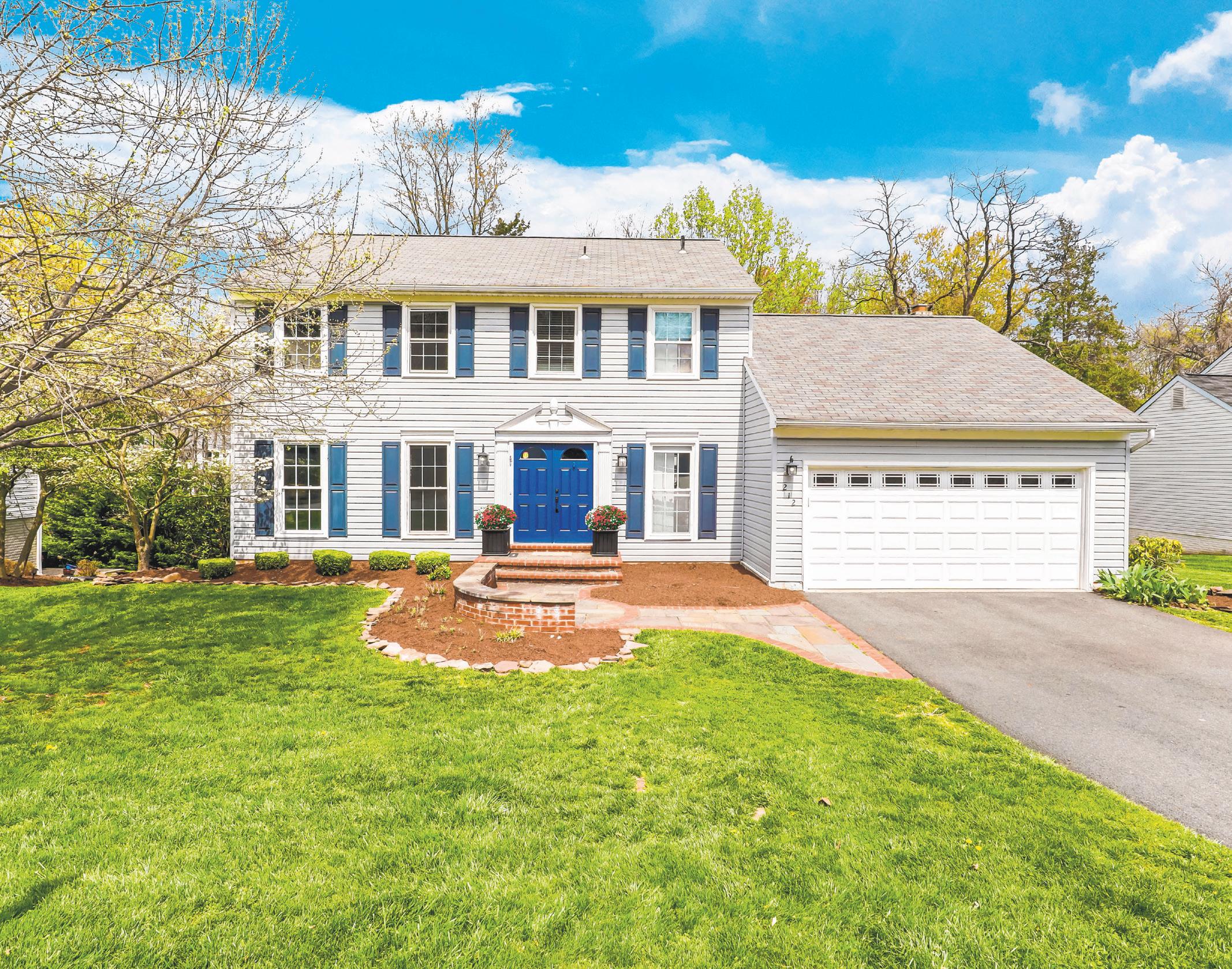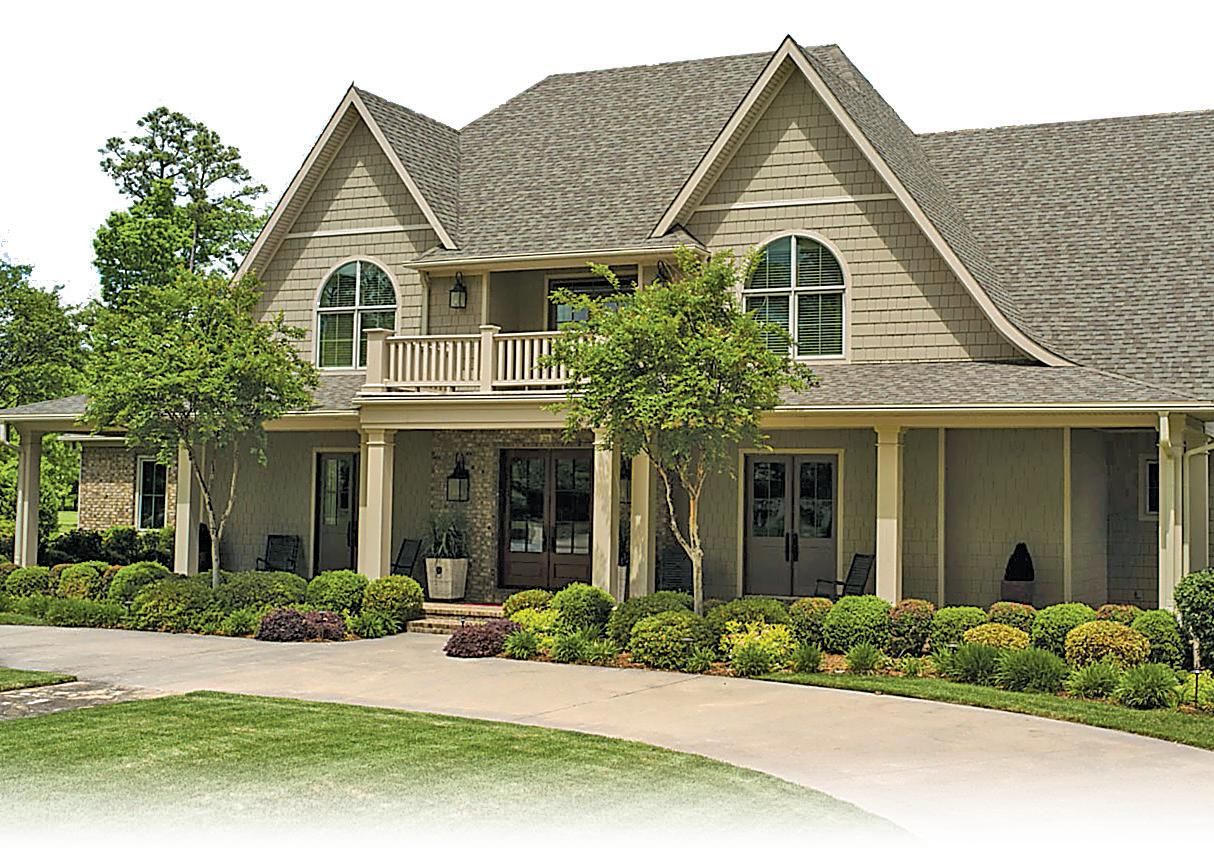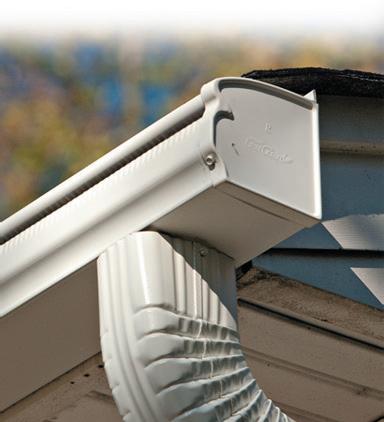LOUDOUN HOMES
SPRING 2024



Interior designer moves business to farm
SPRING DESIGN TIPS
REALTOR Q&A
HOME OF THE WEEK
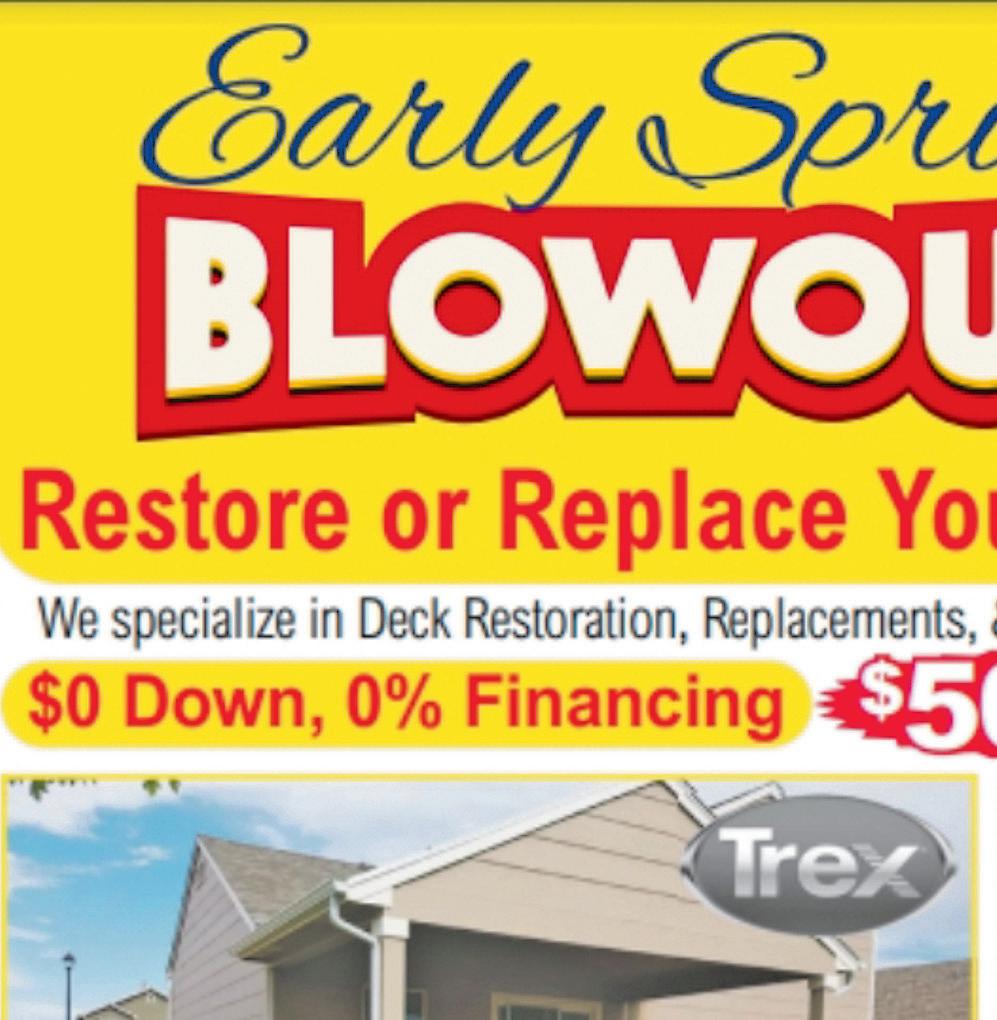
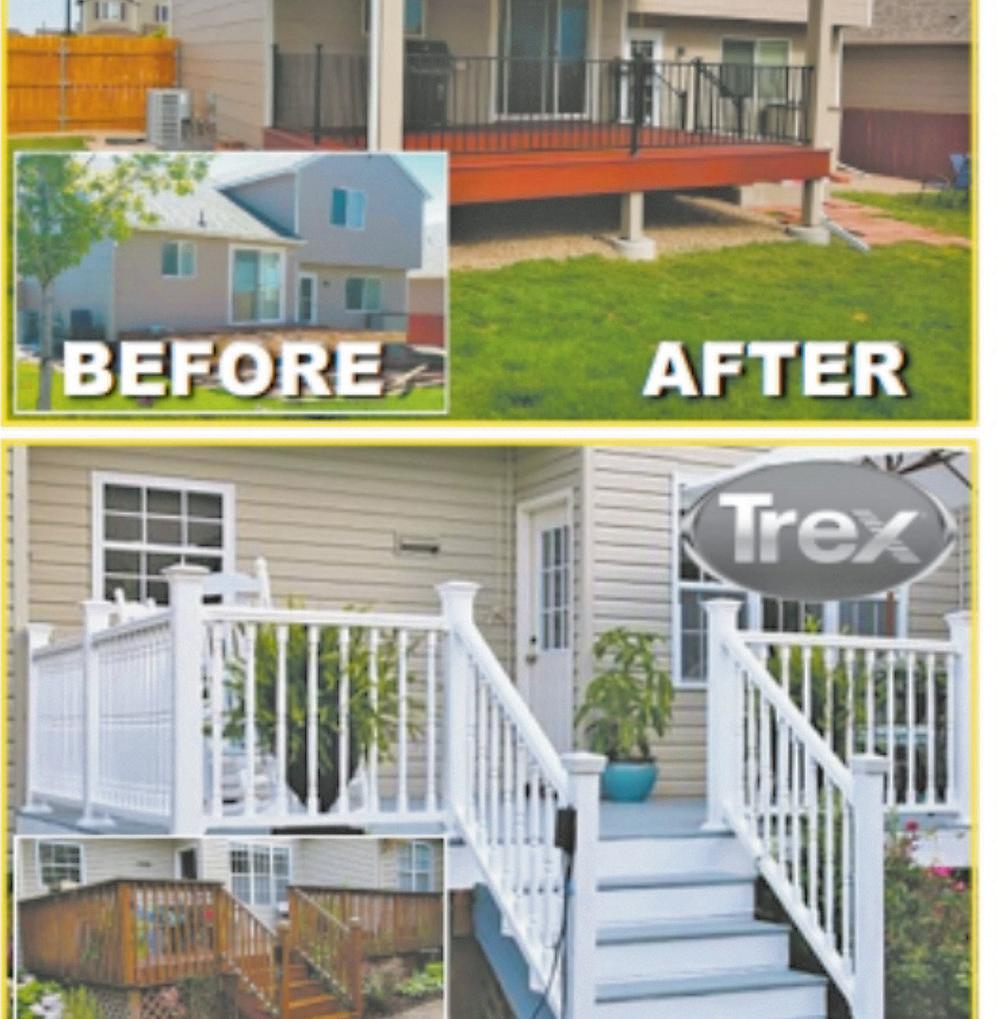

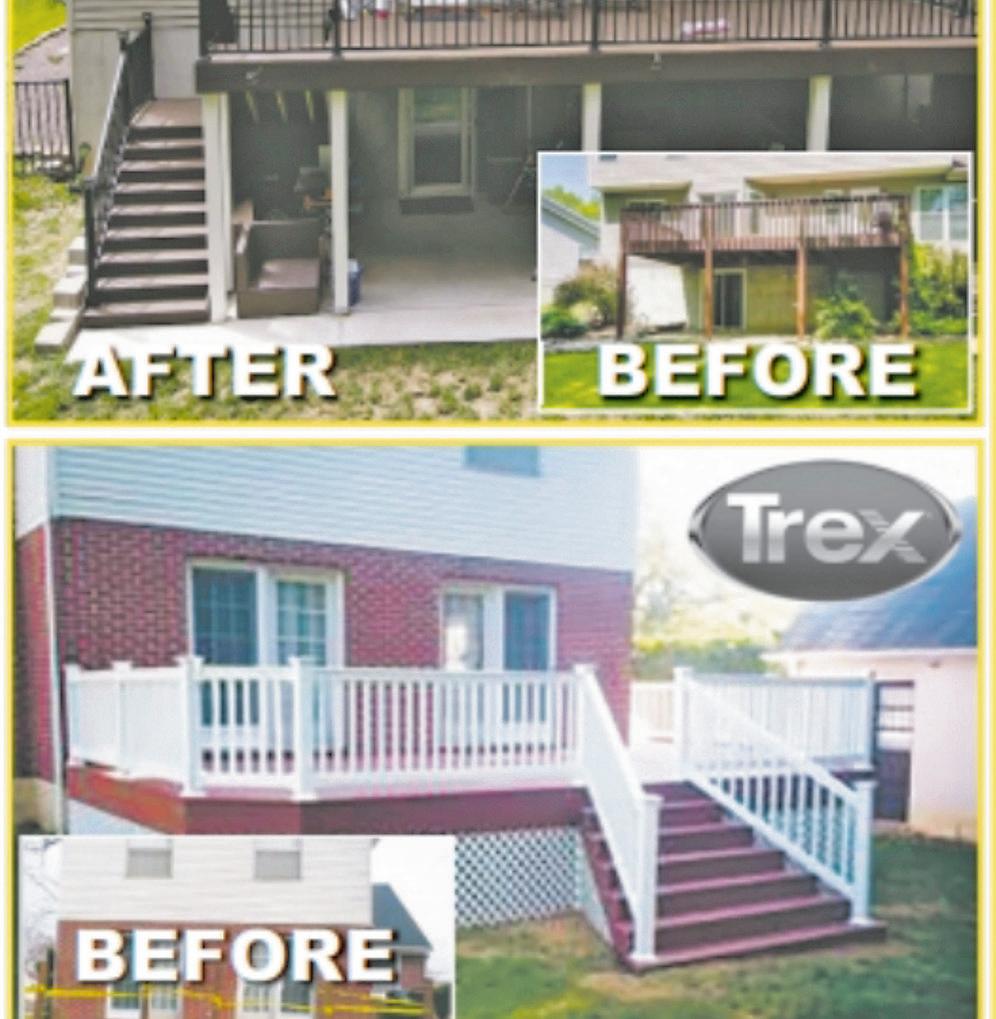


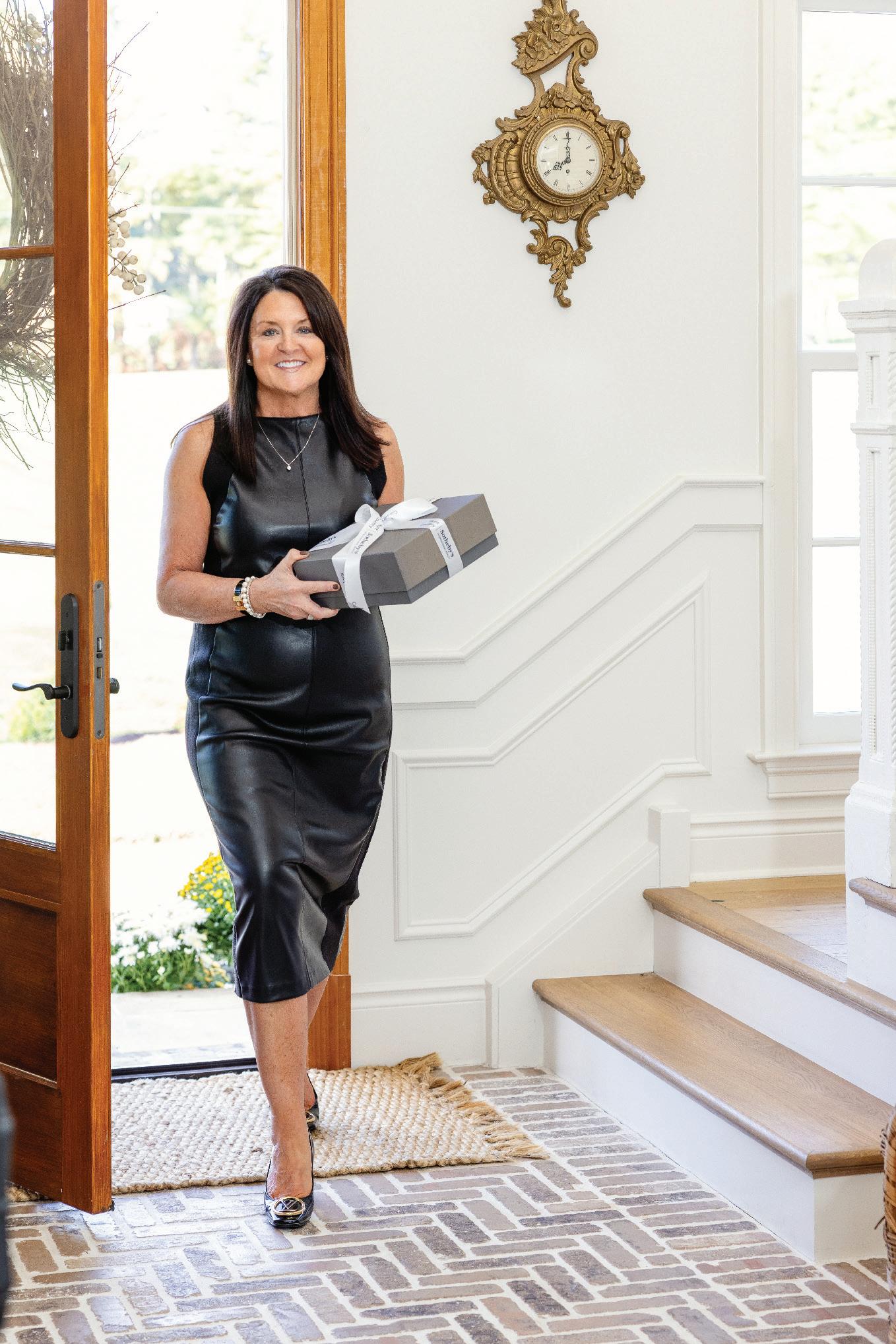

After eight years in downtown Leesburg, a beloved interior design shop is moving from King Street to a 14-acre farm located about 10 minutes outside the town.
The idea behind opening 27 South first began after Carolyn and Nick McCarter fell in love with Leesburg and wanted to become more involved with the community.
In the years prior to opening the store, Carolyn’s natural talent in interior design and furniture restoration blossomed as a vendor at the Old Lucketts Store. As her business grew, they decided to open a home interiors and furniture storefront and found the perfect space on King Street. 27 South opened in 2016.
Around 2019, the couple purchased a farm property across the road from their home with a goal of fixing it up and having a place to spend time with their three young children.
“It was a passion project,” Carolyn said. “We always had a goal of sharing it with the community somehow. We have two Airbnbs here, and we get great feedback from them.”
The farm is home to cows, a donkey and several other animals. There is also a large pond.
Now, they are ready to open their beautiful property to the public by moving the existing 27 South business into two renovated barn buildings, which are roughly the same square footage as their former space on King Street.
They will continue to sell the same home accessories and furniture that people have come to expect at the store, she said.
27 South will be open three days a week or by appointment for interior design consultations, with a targeted opening date in the first week of May.
“We loved being downtown and formed a lot of great relationships and we are excited to have them come out here.
We are close to the breweries and vineyards and it’s a fun stop on a Saturday and very kid-friendly,” McCarter said. “This is a new chapter.”
McCarter said the biggest trend they see is a return to using vintage or antique furniture. 27 South plans to carry more vintage pieces and accessories mixed in with products such as lighting, tableware, candles and pillows, she said.
“This is a great way to make a house feel more sophisticated,” she said. “It adds warmth and coziness.”
She said they are seeing a shift away from gray and cool tones and people are looking to warm up their homes with color.
“There is nothing better than a piece of furniture with a warm patina. You can’t manufacture that,” McCarter said.
Other trends include using unique lighting made with different materials.
“Add textures to your space to create

team from 27
a curated and collected home,” she suggested.
She recommends layering the textures so that not everything matches in the home, such as using mixed metals.
“Use brass but toned down and unlacquered. Silver is coming back. We are seeing mixed metals with different textures and colors — but is cohesive,” she said.
Another trend is the use of wallpaper, which can be used with bold patterns, color or neutral.
“Wallpaper is here to stay,” she said. “The overall theme is creating interesting, collected rooms with different patterns and textures.”
Reagan Talbot is the lead designer on the team, and she helps navigate anything from small design questions, such as what type of lighting to pick in a space, to fullscale design services.
She agrees that it is important to create interest in a room with earth tones, patterns and textures.
“Any opportunity to add texture creates mood, soul and depth to a space which makes it special,” Talbot said.
Her passion is to curate vintage and antique pieces which she mixes in with newer ones.
“For example, buy a beautiful French antique sideboard. You can stare at it and get lost in where it has been,” she said.
“We like to lean into the timeless effect with materials that feel like they have been in the home for a really long time and takes the edge off the new build feel,” she added.
Talbot said the pandemic has helped their business, with people spending more time at home and opening their eyes to the importance of creating an inspiring space.
“It’s important to feel grounded and inspired where you live and it’s our mission to help people realize that,” she said.

Talbot has been working on an extensive project called “Haymarket Hideaway” since 2020.
What started as a gut renovation on a primary bathroom ended up as a four-year whole-house project in Haymarket.
“This smaller primary bath project became the jumping off point to renovate the entire home,” Talbot said. “We had fostered such a wonderful and trusting working relationship during the process of their
bathroom remodel that they hired us to help reimagine every corner of the rest of their home.”
The 20-year-old 5,000-squarefoot home on a 10-acre lot was ready for a makeover, working with Clites Architects, J.D. Eicher and Kevin Billings of Dexter and Plaid. Talbot said it was an “amazing team.”
“It all came together beautifully,” she said. “It took years to complete but it is the most rewarding feeling to have been a part of this.”
In the primary bathroom, Talbot said, they selected beautifully crafted plumbing fixtures and lighting to pair with materials like river stone and imperfectly crackled shower tile. This gave an organic, yet elevated spa-like feel.
“The overall vibe of Haymarket Hideaway is elevated and organic,” Talbot said.
Her goal with this project was to create a calming spirit throughout the home, she said.
“Everything we design is inspired by nature to some capacity, so it goes without being said that the views surrounding this property set the tone for the design of the entire home. From organic leafy wallpapers, reclaimed oak accents, living brass finishes, natural stone, handmade Zellige tiles, imported antique furnishings and rugs and bespoke vintage lighting – we carefully selected materials to incorporate into each space that have an Old World feel,” Talbot said.
The project included ripping most of the home’s walls down to the studs. Everything was rebuilt through a fresh lens using “timeless materials and thoughtful millwork details.”
“It wouldn’t have been possible without the genius and thoughtful craftsmanship of the rest of our team — Clites Architects and J.D. Eicher,” she said.
The home features a three-story staircase with iron railings and a delicately curved stringer feathered with plaster that is truly a work of art and required so much thought and intention to execute, Talbot said.
The floor-to-ceiling vertical wall paneling in the two-story Great Room, stone fireplace and reclaimed oak beams create a cozy, cottage-like feel while making a bold architectural statement.
Each bathroom was gutted and designed from scratch with custom cabinetry by Brave Custom Woodworking.
European hardwoods sourced from Cochran’s Lumber ground each space and evoke a feeling of warmth and age.
“We were lucky to work with so many local businesses that execute their craft so beautifully,” she said. “The home as a whole feels very refined, yet welcoming, layered and lived-in. This is the mark we strive to leave on each space we are hired to create, and we are forever grateful for this opportunity,” she said.

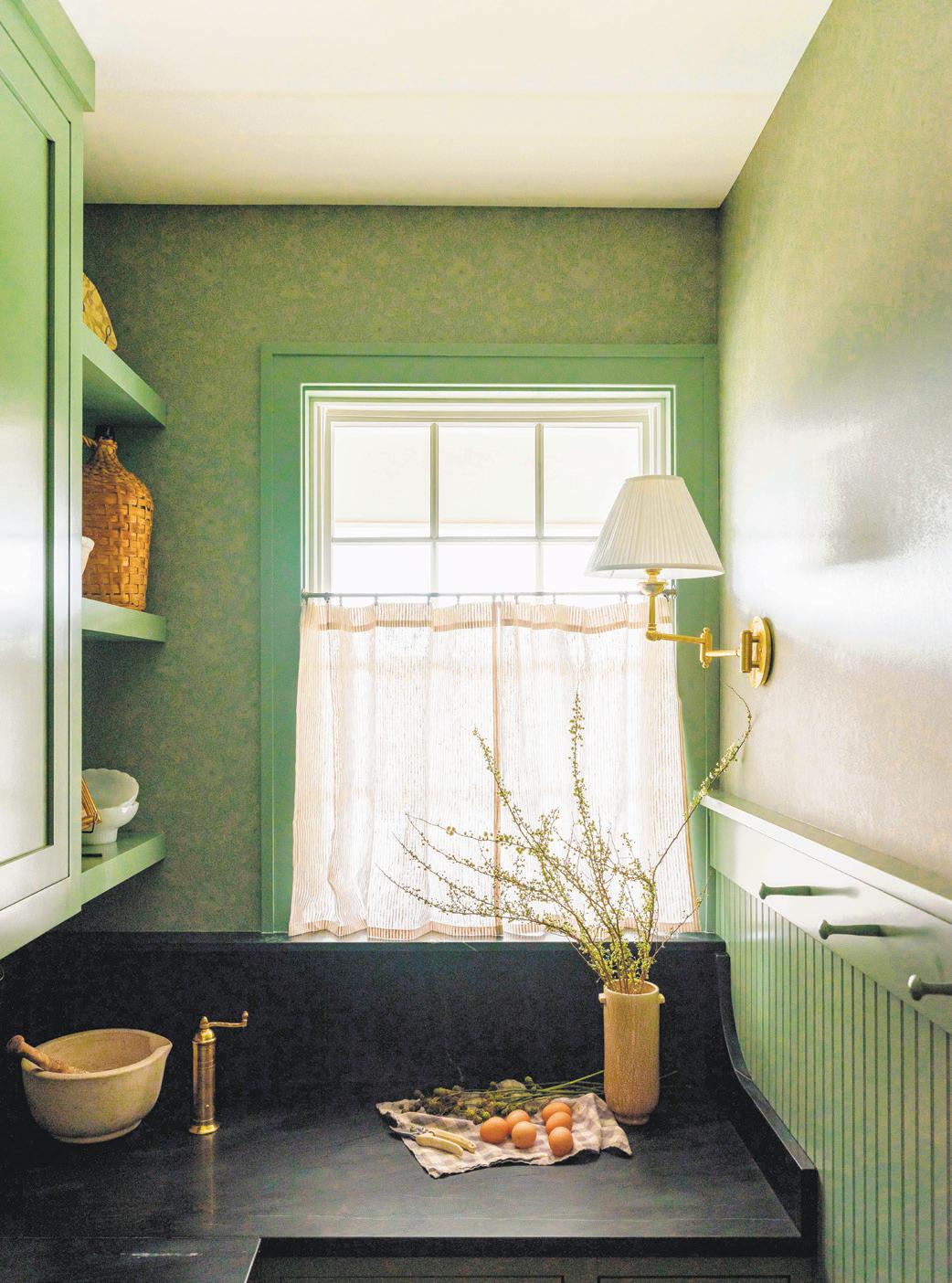
Featured here is the breakfast nook, pantry, dining room, guest bathroom and powder room. The breakfast nook was designed to have a peaceful, letthe-outdoors-in feel. It feels minimal, but rich with age and texture with a reclaimed oak cladded ceiling, European plaster pendants, linen drapery and a French antique farmhouse table with the sweetest pinstriped fabric chairs. Directly off of the breakfast nook is the dining room, fully wrapped in a neutral foliage-patterned wallpaper and matching drapery with a gloss ceiling. The antique rush dining chairs, vin -

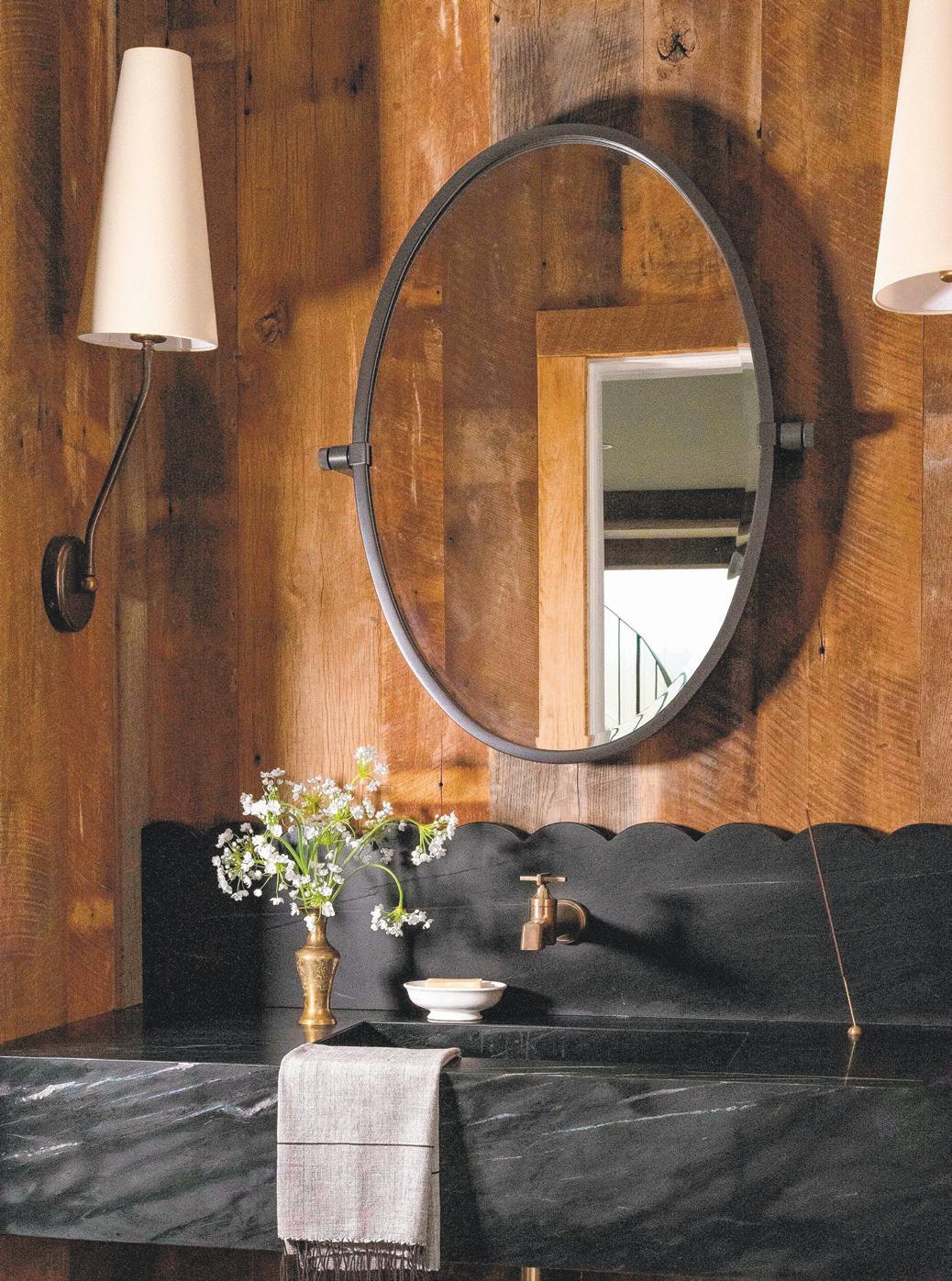
tage mid-century Italian chandelier, oversized linen abstract and antique oil painting create a romantic vibe that fully encapsulates you- it makes you want to pour a glass of wine, light a candle and stay a while. Off the kitchen is the pantry, fully color-drenched in green cabinetry, with beadboard and a subtle leafy wallpaper with a green-undertone soapstone countertop. The guest bedroom is a small, yet very impactful space which we thoughtfully designed to include a plush olive green rug, leaf-patterned bedding, linen drapery, gilded frame gallery wall and an antique scalloped
bench from Ekster Antiques. Off of this bedroom is a guest bathroom with beautifully crafted walnut cabinetry, honed marble, polished brass plumbing and a variation of natural tile. This space feels so timeless, yet fresh at the same time. Lastly featured is the basement powder room that we fully clad in reclaimed oak with a custom floating soapstone vanity and penny tile flooring. The mood in this space is truly so special as it feels like the perfect balance of old and new with a beautiful juxtaposition of masculine and feminine design elements throughout.
Tell us a little bit about yourself. How long have you lived in Loudoun County? Family?
I moved to Loudoun County 25 years ago with my parents when my dad’s job relocated us to the area. I now am married, and my wife, Shannon, and I are raising our three children here in Loudoun.
How long have you been in real estate and what inspired you to go into real estate?
I always had an interest in sales and housing. While in high school I did not participate in any sports, so my parents encouraged me to find a job. I reached out to a local real estate office to see if they were hiring, and they were not but they asked me to come in for an interview. I was 15 and they hired me to be an office assistant. I answered phones, helped with marketing and sending faxes. I continued working part time during the school year and full time in the summers. I enjoyed it and knew this was the path I was going to take. Then in 2004 I earned my real estate license and began selling full time in 2005 at the age of 20.
What has the market been like for your business this year?
We continue to see a lower inventory of homes for sale, which has caused a gridlock. We have many clients who would sell their home but will not sell until we can find them a home. So, we are ready when the right home comes on the market but until that does, they will not be selling.
What are the current market trends in Loudoun this spring?
We continue to see an overall strong market for sellers with low inventory and a strong demand in most areas from buyers.
What is the most important thing for homeowners to think about doing to their home before selling?
Although inventory is low, the condition of your home does still impact the ultimate sales price. We are seeing buyers willing to make strong offers, but they are looking for things to be move-in-ready. The first impression used to be when people arrived at your home, but now often the internet presentation is their first impression. Having your home shown ready for photographs and high-quality photography is incredibly important to attract buyers. Keeping your home ready for showings is important.
What is their biggest mistake?
I see sellers not spending their money on the items that will yield them the best return. Studying the comparables is key to understanding what other homes offer, what they have upgraded and updated and how that is reflected in the pricing. Different areas and price ranges can vary so study what the comparable properties offer and focus on that. Often sellers do not make updates and want to leave it up to the buyers to make their selections. Fresh paint

and updated flooring can go a long way in helping a seller obtain a higher price for their home.
What is your favorite home design trend currently?
I am a fan of the light, bright and neutral sections as I feel they are timeless. There are always trends that are great and in style at the time, but I am a fan of the timeless looks. A white kitchen and the cozy warm feeling seem to last the test of time.
What’s your best advice for buyers?
I have always believed real estate was a long-term investment and I have experienced many markets in my career over the last 18 years of selling real estate. For buyers, first and foremost, I think it’s very im-
portant to make sure the numbers are comfortable. There are costs in owning a home beyond the mortgage payment, so I really want a buyer to be comfortable in the overall expense of home ownership. Also, really identifying what their must haves are in a home and what they can be flexible on. Dialing in on what they really want and need is important to me.
Describe a perfect weekend or way to spend your free time in Loudoun. When not working here in Loudoun County I enjoy spending my free time with my family attending the kids’ activities or one of the local breweries or wineries here in Loudoun. We are very fortunate to have so much to do here in Loudoun!
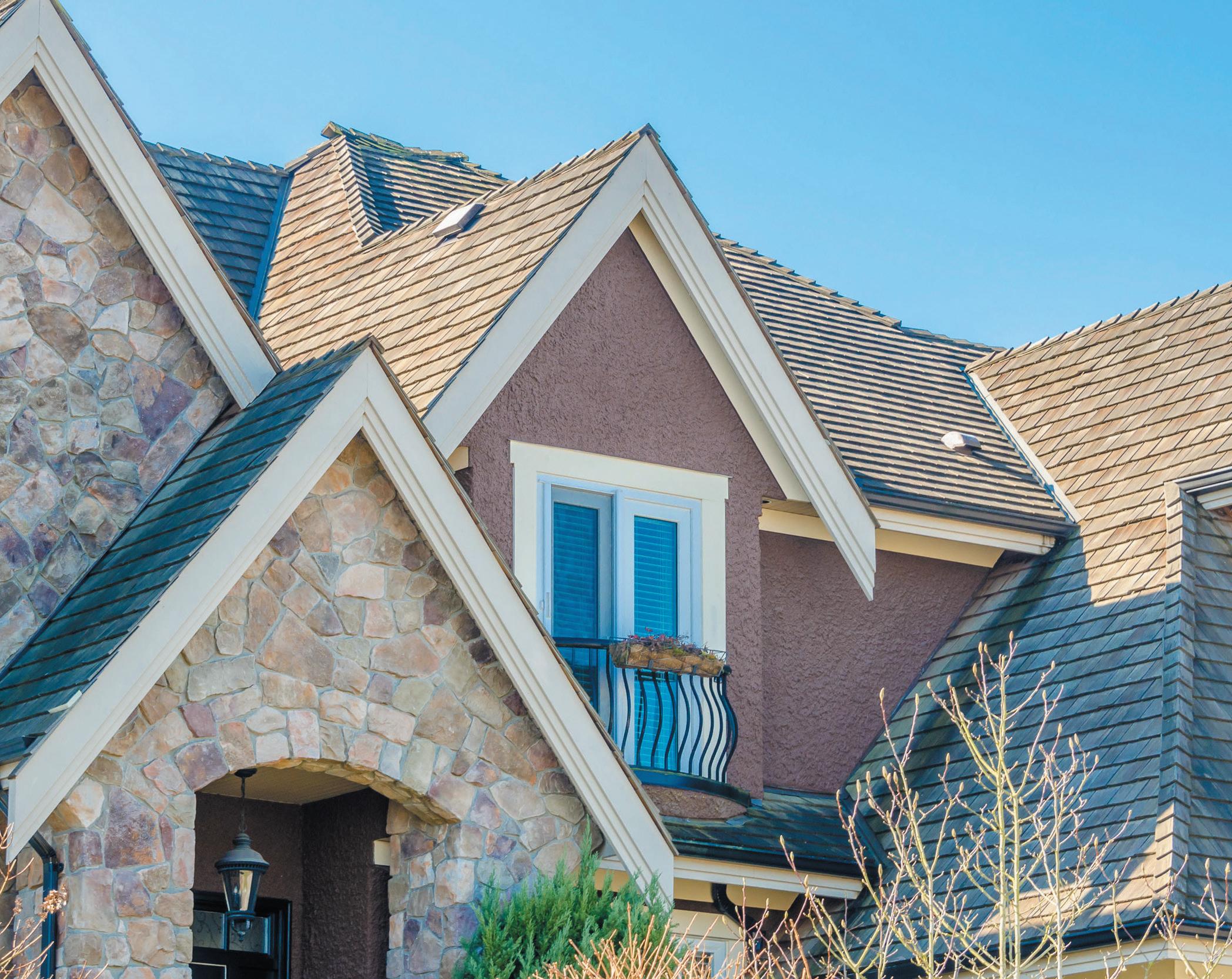











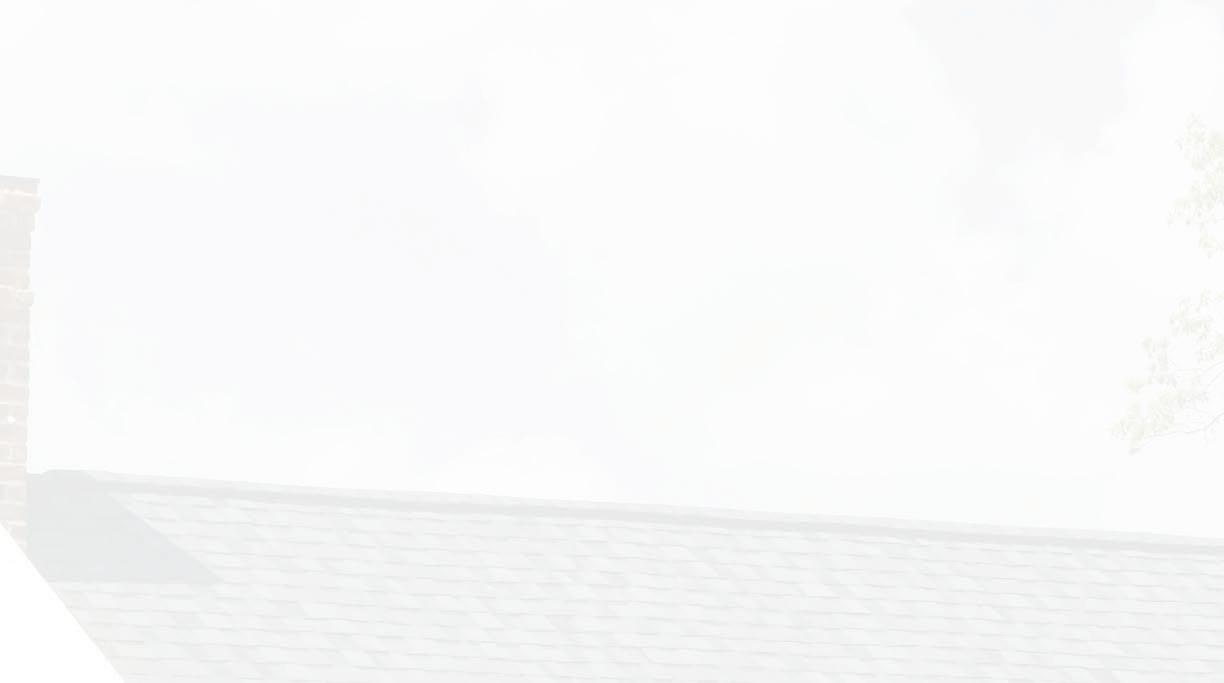

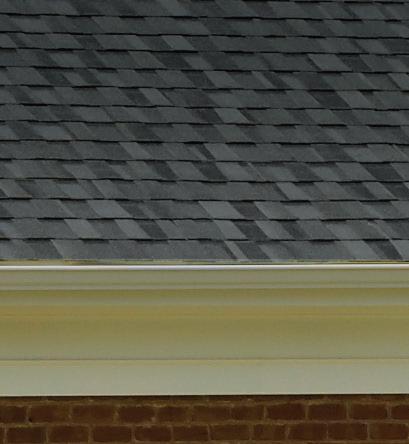
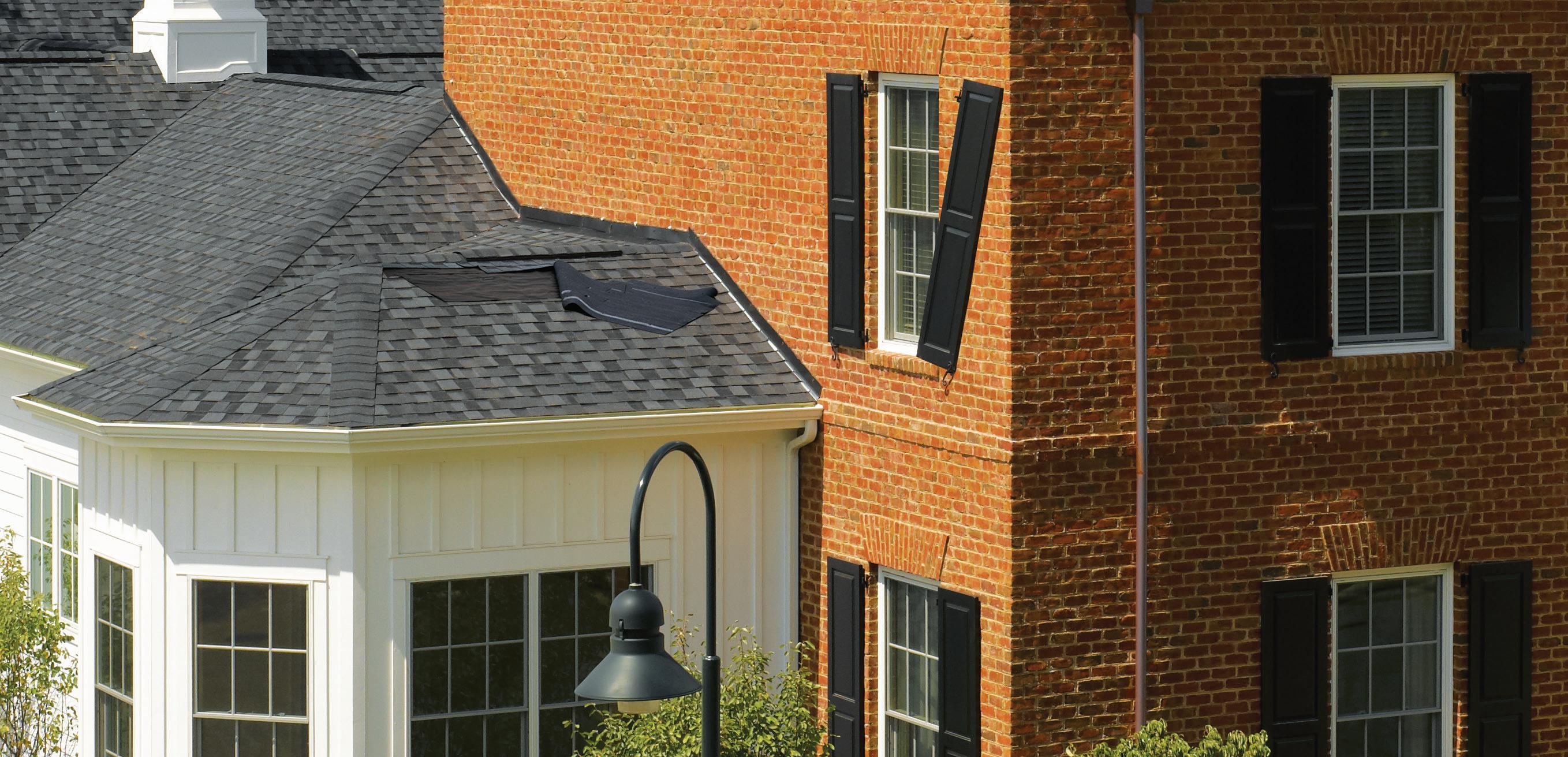
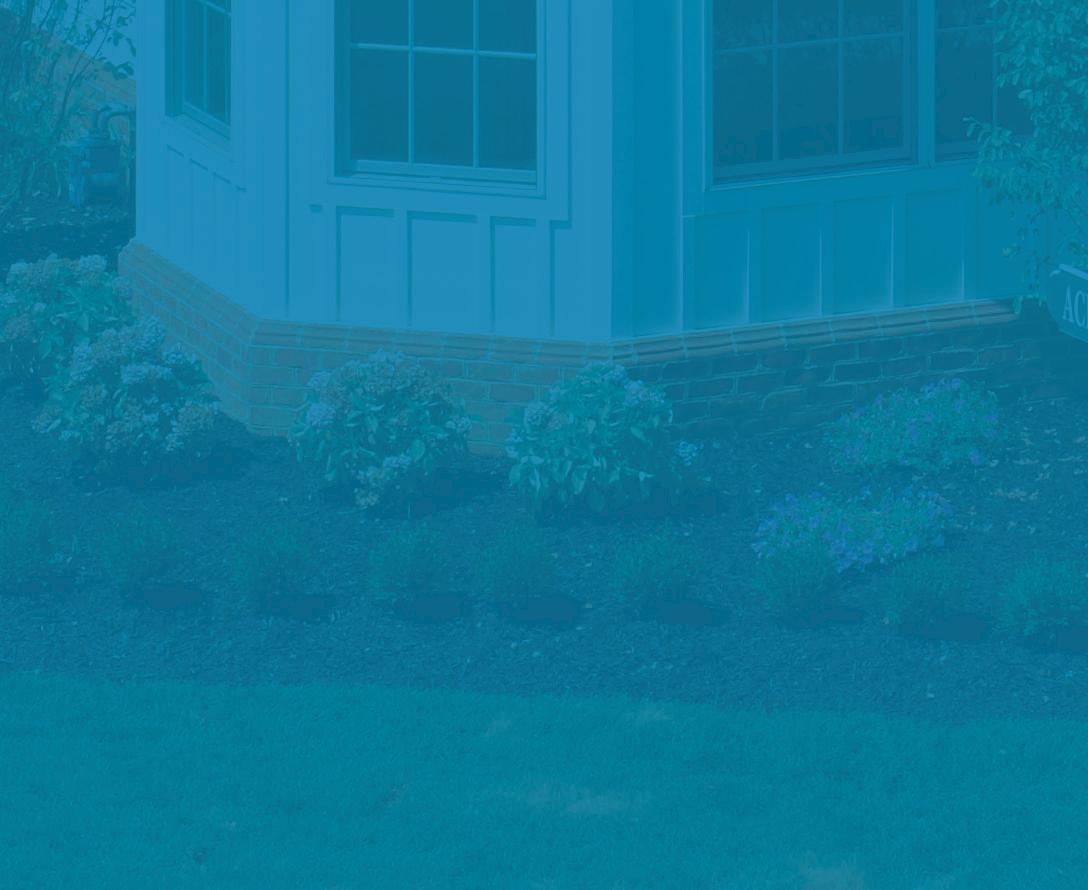


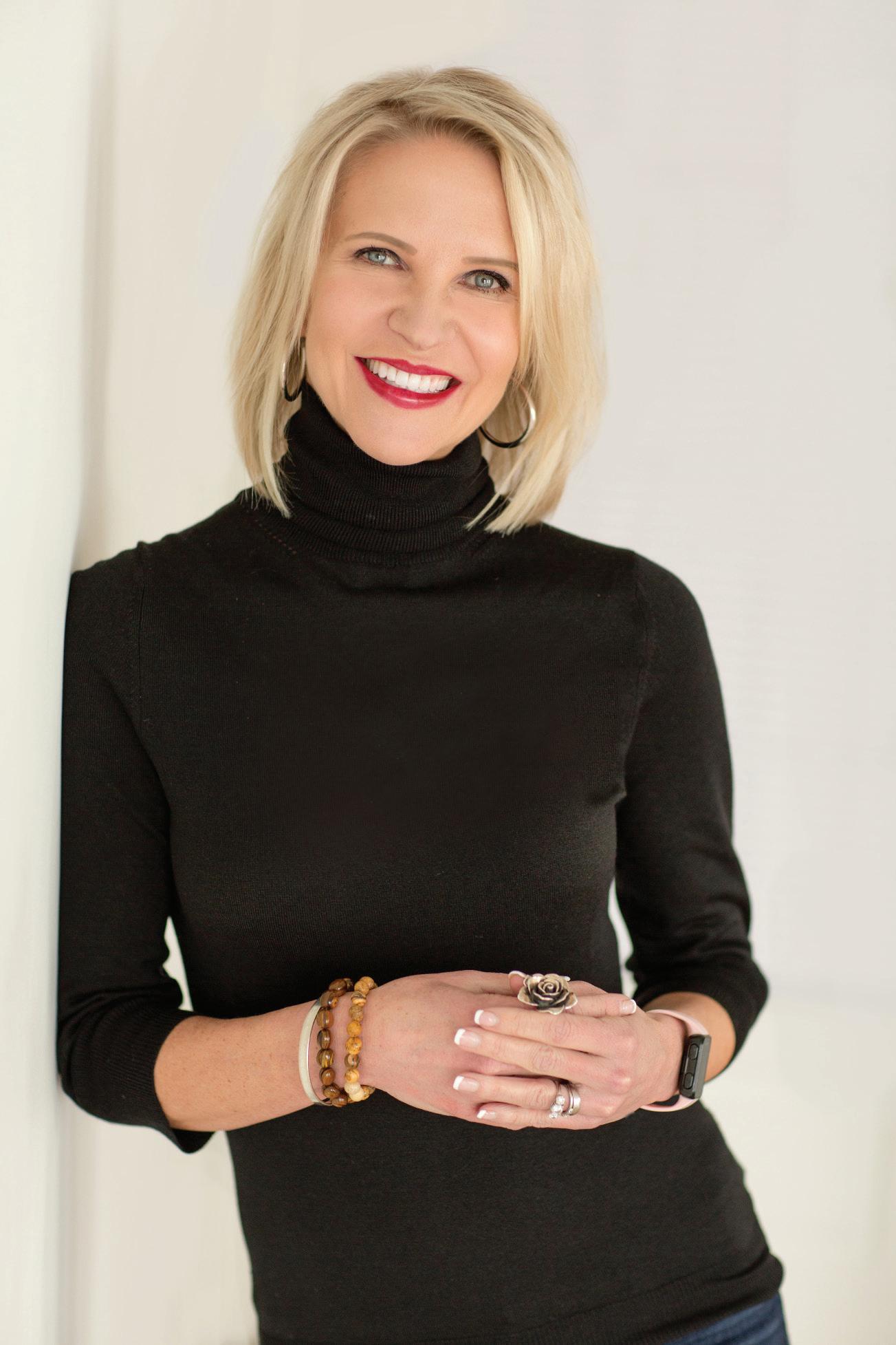




LOS ANGELES — Shop for a home now or hold out for the possibility of lower mortgage rates? That question is confronting many home shoppers this spring homebuying season.
Lower rates give home shoppers more financial breathing room, so holding out for a more attractive rate can make a big difference, especially for first-time homebuyers who often struggle to find an affordable home.
However, there’s a potential downside to waiting. Lower rates can attract more prospective homebuyers, heating up the market and driving up prices.
Acting now would likely saddle a buyer with a rate of around 6.9% on a 30year mortgage. In late October, the rate surged to a 23-year high of nearly 8%, according to mortgage buyer Freddie Mac. Economists generally expect the average rate on a 30-year mortgage to decline later in the year.
“If mortgage rates do in fact drop as expected, I would expect there to be more competition from increased demand, so that’s one reason to potentially act now,” said Danielle Hale, chief economist at Realtor.com. “And then those buyers, if mortgage rates do fall, would presumably have an opportunity to refinance.”
Gagan Hegde, a software engineer in Durham, North Carolina, is leaning toward the proactive approach as he looks to buy his first home.
Hegde, 29, worries that delaying his search would eventually put him up against others also looking for lower rates in a market that’s already plenty competitive.
Just recently, he matched the $450,000 list price on a townhome, but another buyer offered more than what the seller was asking.
Rather than dwell too much on mortgage rates, he’s now focusing on finding a three-bedroom, three-bath home he can afford. Once rates fall, he’ll look to refinance.
“I’m just completely being agnostic to the financing prices because I think if you start paying too much attention to it, there’s no clear answer,” he said.
The rock-bottom mortgage rates that fueled a buying frenzy in 2021 and early 2022 are long gone. While an average rate on a 30-year home loan of just under 7% is not far from the historical average, that’s little consolation to homebuyers who, prior to the last couple of years, hadn’t seen average rates this high going back nearly two decades.
Combined with a nearly 44% increase in the national median sale price of previously occupied homes between 2019 and 2023, elevated mortgage rates have made buying a home less affordable for many Americans.
A recent analysis by Redfin found that the typical U.S. household earns about
 Associated press/David Zalubowski
Associated press/David Zalubowski
A for sale sign stands outside a home on April 3, in Denver. Holding out for more attractive mortgage rates could give homebuyers some financial breathing room.
$30,000 less than the $113,520 a year it needs to afford a median-priced U.S. home, which the company estimated was $412,778 in February. Redfin defines a home as affordable if the buyer spends no more than 30% of their income on their monthly housing payment. The analysis factored in a 15% down payment and the average rate on a 30-year loan in February, which was around 6.8%.
Lower mortgage rates would boost homebuyers’ purchasing power. Financing a $400,000 home with a 30-year mortgage with a fixed rate at last week’s average of 6.82% works out to about $215 more a month than if the rate was at 6%, for example. Monthly payments on the same loan two years ago, when the mortgage rate averaged 4.72%, would be $534 less.
Many economists expect that mortgage rates will ease this year, but not before inflation has cooled enough for the Federal Reserve to begin lowering its short-term interest rate.
The Fed has indicated it expects to cut rates this year once it sees more evidence that inflation is slowing from its current level above 3%. How the bond market reacts to the Fed’s interest rate policy, as well as other factors can influence mortgage rates. Current indications are mortgage rates will remain higher for a while longer.
For now, the uncertainty in the trajectory of mortgage rates is working in favor of home shoppers like Shelby Rogozhnikov and her husband, Anton.
The couple owns a townhome in Dallas and want more space now that they’re planning on having their first child. They’re looking for a house with at least three bedrooms that’s priced within their budget of around $300,000.
They’re not feeling any urgency, but they are eager to avoid a surge in competition should mortgage rates decline in the coming months.
“I know interest rates will go down eventually, but I feel like when they go down housing prices might go back up again,” said Shelby Rogozhnikov, 38. a dental hygienist. “I have the mortgage rate thing to worry about and my biological clock, which has less time on it than the mortgage rates, so it’s now or never.”
Real estate agents from Los Angeles to New York say bidding wars are still happening, though not as often as in recent years in some places.
“Overall, the bidding wars are not nearly as extreme as they were in markets’ past,” said Tony Spratt, an agent with Century 21 Real Estate Judge Fite Co., in the Dallas-Fort Worth area. “We’re still in a sellers’ market, but it’s much more mild than it was.”
Home shoppers also have more properties to choose from this spring than a year ago. Active listings — a tally that encompasses all the homes on the market but excludes those pending a finalized sale — have exceeded prior-year levels for five straight months, according to Realtor. com. They jumped nearly 24% in March from a year earlier, though they were down nearly 38% compared to March 2019.
The still-relatively tight inventory is helping give sellers the edge in many markets around the country, but not all.
In Raleigh, North Carolina, home listings are taking longer to sell, and that’s made sellers more flexible on price or with helping cover repair costs, said Jordan Hammond, a Redfin agent.
“Before we saw sellers could really do what they wanted,” she said. “They didn’t
have to contribute at all to the buyer’s purchase. And now that’s kind of flipped. I’m seeing more buyers pushing sellers.”
Still, the thin inventory of properties on the market means home shoppers who can find a property for sale in their price range may want to put in an offer rather than wait, because there’s no guarantee a better option will come along right away. Those shopping in areas where newhome construction is more prevalent may have better luck this spring.
In response to higher mortgage rates, more than one-third of builders cut home prices in 2023. Many also offered buyers incentives like mortgage rate buydowns and below market-rate financing.
Builders also stepped up construction of smaller, less expensive homes, which helps explain why the median sale price of a new U.S. home fell nearly 8% in February from a year earlier to $400,500. That’s the lowest level since June 2021.
Home shoppers and sellers who wait until summer to test the market will also have to factor in how they may be affected by proposed changes to policies around real estate agent commissions.
Last month, the National Association of Realtors agreed to make policy changes in order to settle federal lawsuits that claimed the trade association and several of the country’s biggest real estate brokerages engaged in business practices that forced homeowners to pay artificially inflated commissions when they sold their home.
The policy changes, which are set to go into effect in July, could lead to home sellers paying lower commissions for their agent’s services. Buyers, in turn, may have to shoulder more upfront costs when they hire an agent.

The “Unexpected Red” theory, first suggested by Taylor Migliazzo Simon, has rapidly gained momentum, with more than a million views on her TikTok video.
Is your living space looking dull and drab? Add a bit of red, and it will look better instantly.
“The ‘unexpected red’ theory is basically adding anything red, big or small, to a room where it doesn’t match at all, and it automatically looks better,” Migliazzo Simon, a Brooklyn-based interior designer, explains at the start of the video.
Some viewers commented, “You could do that with any primary color,” and offered the colors yellow and blue as alternatives to red. But will these colors work just as well?
The unexpected red theory works due to the psychological impact of the color. “Red is known to evoke strong emotions and stimulate energy, making it a powerful choice in interior design,” interior designer Raf Michalowski of Meble Furniture explains.
In color theory, red is often used as an accent color in design to evoke passion and attention.
This trend gained rapid popularity due, in part, to its accessibility; even those without design experience can dabble in color theory. Execution can be as simple as placing a red vase in a typical bookcase or introducing a red throw or pillow on a sofa. There are no hard and fast rules. Best thing? The immediate, often pleasant, creation of an elevated space.
Ready to tackle this theory head-on? Here are seven ways to test it out at home today.
USE IT TO ADD DRAMA
Michalowski thinks those looking to make decor changes should apply the theory judiciously. “Its use requires careful consideration as it can also be overwhelming if not balanced correctly. The theory suggests using red sparingly but strategically to create focal points or add drama to a room.”
He recommends using red accent walls, statement furniture pieces, acces-
sories like throw pillows, rugs, or even vibrant artwork to create a focal point that effortlessly draws the eye.
USE IT SELECTIVELY
Consider the function of the room when incorporating this trend. “A bold red accent wall can be perfect for a living room or dining area, but it may not be suitable for a bedroom where you want to promote relaxation and calmness. In this case, opt for a softer shade of red or incorporate it through smaller elements like bedding or curtains,” he adds.
CHOOSE YOUR REDS
Countless shades of red comprise the shade’s broad spectrum, from deep, moody wine tones to fiery chili-hot reds. While it may seem that any red shade will suffice, the art lies in choosing the perfect hue to achieve the desired impact.
Cool reds lean toward the purple side of the color spectrum and harmonize well with cool tones like greens and blues. Conversely, orange-forward warm reds exude heat and energy. Use these to punch up your decor and make a bold statement.
RED IN SOCIAL AREAS
Incorporating red into the home’s social areas, like the dining room or living room, can elevate the ambiance and create a welcoming atmosphere. Adding a red dining chair, table settings, or a dramatic lighting fixture can infuse passion and excitement, creating a striking backdrop for a lively social gathering.
PAIR IT WITH NEUTRALS
“Red is a bold color, no doubt about it. But to keep things from feeling too overwhelming, it’s all about finding that perfect balance,” says a U.S.-based interior designer, Riley Annen. Pairing red with neutral tones like whites, creams, or grays can help create a look that’s equal parts bold and sophisticated.”
LAYER IT ON
Contrary to conventional wisdom, red can be a serene and sensual choice for the bedroom. Opt for deep, rich red bedding or velvet pillows in maroon or darker shades of red to create a cozy and intimate ambiance.
CONTRAST IT
Pair it with contrasting colors and textures to create a captivating visual dissonance that stops people in their tracks. Don’t be afraid to mix things up; unexpected combinations often yield the most stunning results. “Experiment with bold patterns, luxe fabrics, or even a splash of another vibrant hue to make your red accents pop,” suggests Annen.
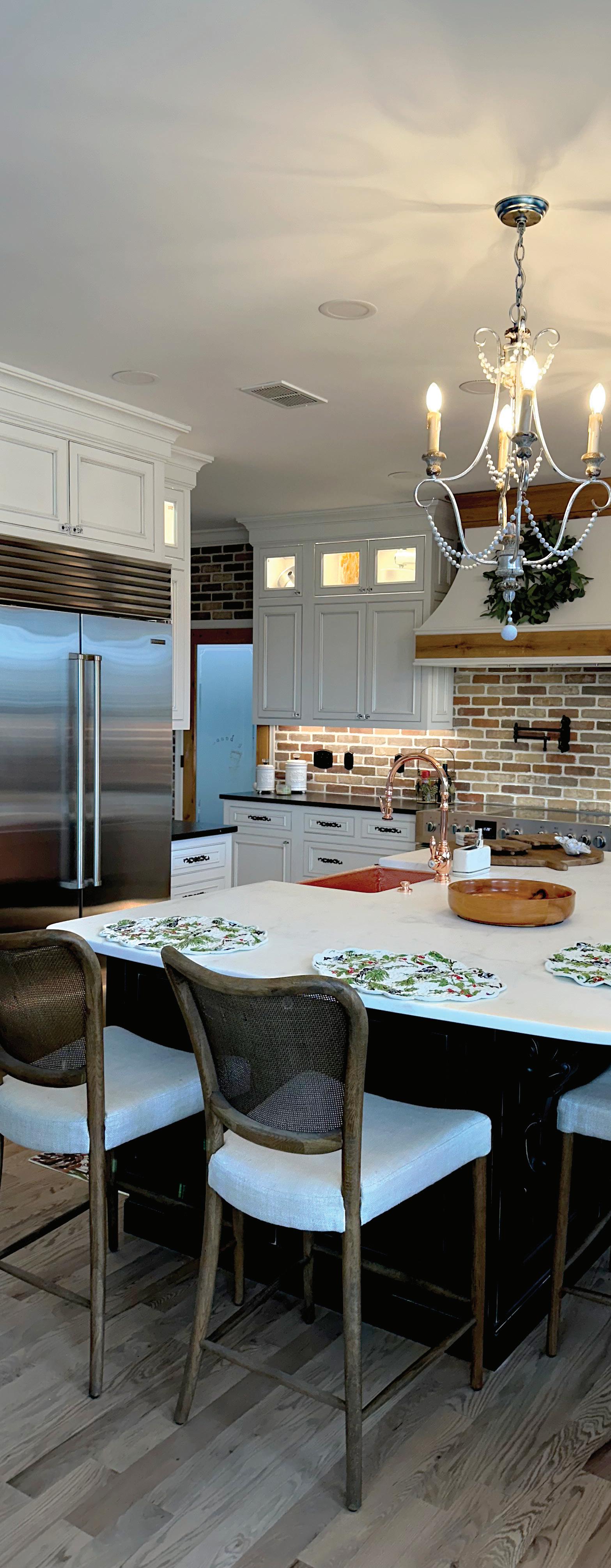
I recently started my seeds – tomatoes, cucuzza squash, climbing zucchini, golden beets, Florida cranberries, nasturtiums, zinnias, edelweiss, various herbs and Roma beans. They barely fit on my kitchen counter, which becomes a transient nursery every spring.
Come planting time, they also won’t all fit in my 4-by-4-foot raised beds, grow bags, Earth boxes or around the arbor I installed last year. But rather than curtail my ambitions, I’ll slip sweet potatoes, onions, extra tomatoes and other edibles into my front-yard flower garden.
The practice of combining fruits, vegetables and herbs with ornamental plants — called “foodscaping” — is worth considering even if you’re not short on space, as it can create visual interest in your beds and borders.
— All plants, whether edible or ornamental, should be grouped according to their sunlight, water and fertilizer requirements. Mixing them up is a recipe for disaster. Don’t do it.
— Even if two plants are sun lovers, consider whether either will grow so large that it shades out the other.
— Follow the spacing recommendations on your seed packs or plant tags. They are meant to accommodate the mature size of plants and thwart fungal and

This undated image provided by Brie Arthur shows a “foodscaped” garden in Fuquay-Varina, North Carolina, where tomatoes, peppers, basil and eggplant hide in plain sight among ornamental plants.
mold diseases that result from overcrowding. This will also protect nearby ornamentals.
— Your edibles should be easily accessible for frequent pest- and disease-monitoring, watering and harvesting. Ensure a clear path to avoid trampling perennials and annuals.
Vining sweet potatoes are beautiful plants with lush, heart-shaped leaves.
They grow quickly to fill bare spots and can be used as an annual groundcover. And their lovely purple flowers are reminiscent of their morning glory relatives. I’ll be planting mine at the front of a border, but they can also be trained to grow up a trellis.
I’ll plant cherry tomatoes near my roses, where they’ll exude the chemical solanine into the soil to protect the shrubs from the fungus that causes black spot, an often-deadly rose disease. The tomatoes will serve as a visual prelude to the rose hips, which won’t come until later in the
season. I strategically selected tomato varieties that are resistant to verticillium and fusarium wilt diseases because roses are also susceptible.
I’ve been growing Alliums (ornamental onions) under my roses for years because they look so pretty together. This year, I’ll add some edible onions and chives to the mix. Aesthetically, they’ll fit right in and hide the bottoms of my leggy rose bushes. As a bonus, they’ll team up with the Alliums to repel degenerate pests like aphids with their aromatic scent.
There are so many other possibilities. You could line a pathway with lettuces or use them as border plants. Lollo Rosa is one of several varieties with eye-catching frilly, red leaves; curled endives, or frisees, have lacy foliage with curly tips. Curly parsley works nicely, too.
Rainbow chards have bold red or yellow stems and interestingly wrinkled leaves with colored veins. Mix them in with ferns, pansies and coral bells.
Rhubarb foliage can add drama to a formal garden when surrounded by low-growing mounded boxwood shrubs.
Underplant pink or orange flowers with purple basil varieties. Amethyst, Dark Opal and the new Prospera Red, which is resistant to downy mildew and fusarium wilt, are three of many options.
Amaranth is an unusual plant with airy red flowers, spinach-like leaves and seeds that can be milled into flour or cooked as a stand-in for quinoa. The plants are annual but tend to reseed, so they typically
As trees, shrubs, perennials and insects enter a new phase of life in our gardens, we, too, emerge from a type of dormancy in spring, a pause from yard work.
Well, buckle up, buttercups. It’s showtime.
First, inspect and assess the garden for safety. Have any tree branches snapped during winter storms? Are any broken and hanging? Now’s the time to remove them, as well as any dead wood. Use a sharp pruning saw to make clean cuts on the diagonal, just outside the branch collar (the swollen, bulbous area where the branch meets the trunk).
If the damage is within reach, you can tackle it on your own. But for anything higher than your head, it’s best to call in a professional arborist.
Prune shrubs, too, except for spring bloomers. Those should be handled
right after their flowers fade.
I know you like things nice and tidy – so do I – but refrain from applying mulch to garden beds until the soil has sufficiently warmed. Doing so earlier would trap cooler temperatures in the soil and delay root awakenings. Instead, mulch when tomatoes are planted in your region. In my New York garden, that means waiting until late May and biting my lip when the neighborhood landscapers started spreading the stuff in March.
Next, only after nighttime temperatures have remained above 50 degrees for an entire week, cut down last year’s spent perennials and ornamental grasses to make way for new growth. The idea is that many beneficial insects and pollinators, which take their cues from the weather rather than the calen-
dar, will emerge ready to work in your garden at that point.
There’s some disagreement among experts about this timing because different species emerge at various temperatures. But I find it’s a good compromise that protects many insects while allowing you to maintain order in your beds and borders, keep your desired aesthetic and get on with your gardening.
If you have a lawn, check it for bare spots. Seed those areas once a week and water twice a day until new growth meets the existing turf height. Don’t let the seeds dry out even once, or you may have to start over. You can mow seeded lawns when young blades are 3 inches tall.
Pull weeds as soon as you spot them, while their roots are still easy to remove. And avoid walking on wet soil. Doing so would risk compaction and structural damage, which is hard to come back from.
When flowering bulbs fade, apply a balanced fertilizer, such as a 10-10-10 product. But don’t remove leaves until they turn yellow. The plants need them to produce energy for next year’s bloom. Finally, give established perennials a dose of fertilizer (I like fish emulsion) as soon as they wake up. And plant new ones, which appreciate six full weeks of growth before the summer heat sets in. Hold off on planting annuals if you live where spring frosts are possible. If you’re anything like me, you’ll probably find even more to do out there. But after tackling these key tasks, you’ll be heading into the growing season in good shape.
JessicaDamianowritesregulargardening columns for the AP and publishes the award-winning Weekly Dirt Newsletter. You can sign up here for weeklygardeningtipsandadvice.





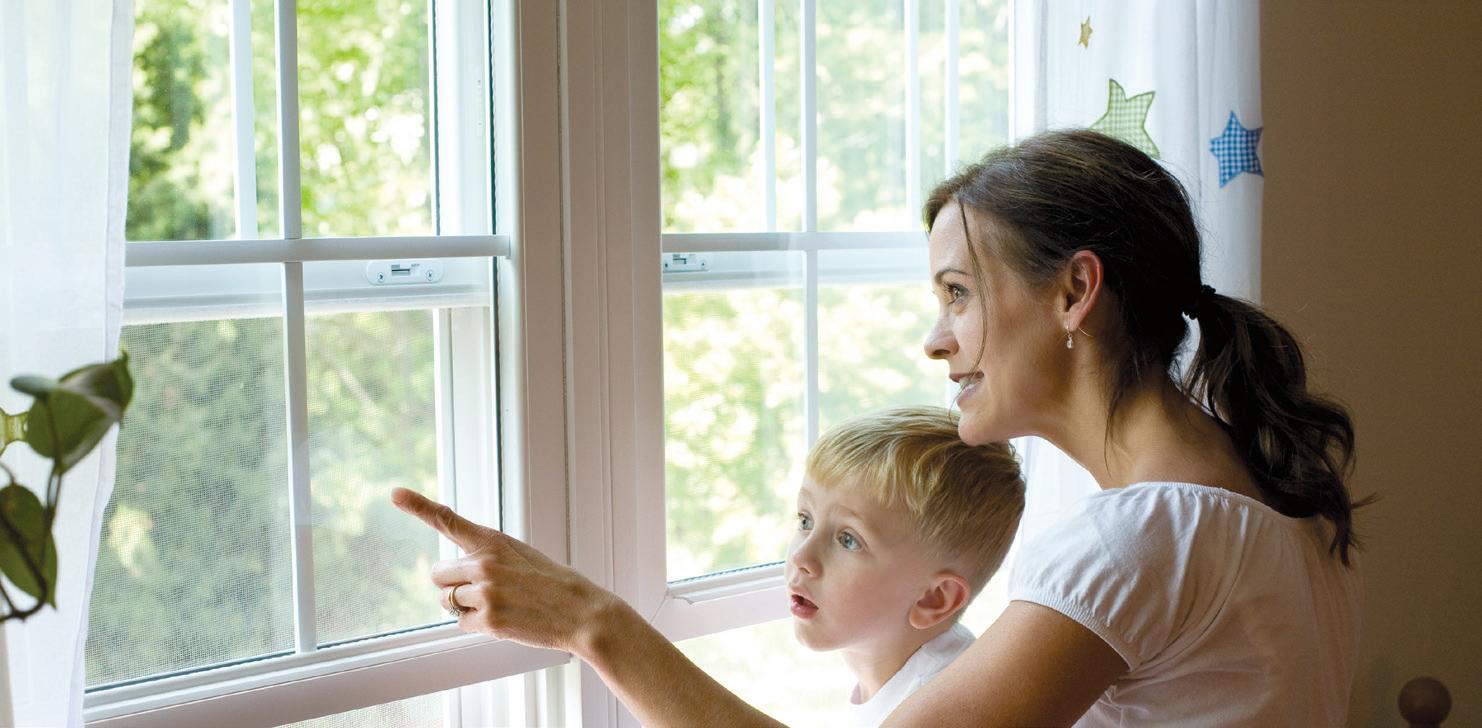
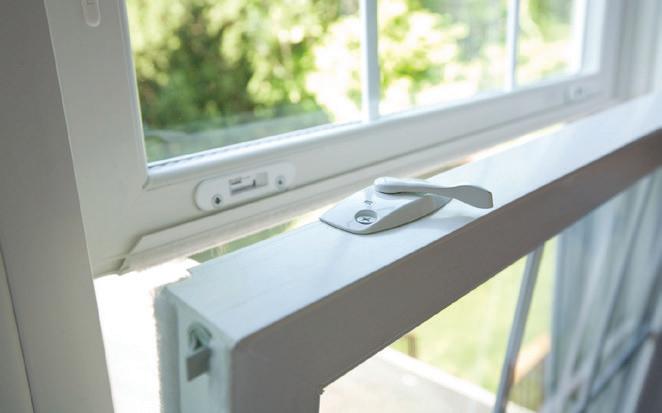




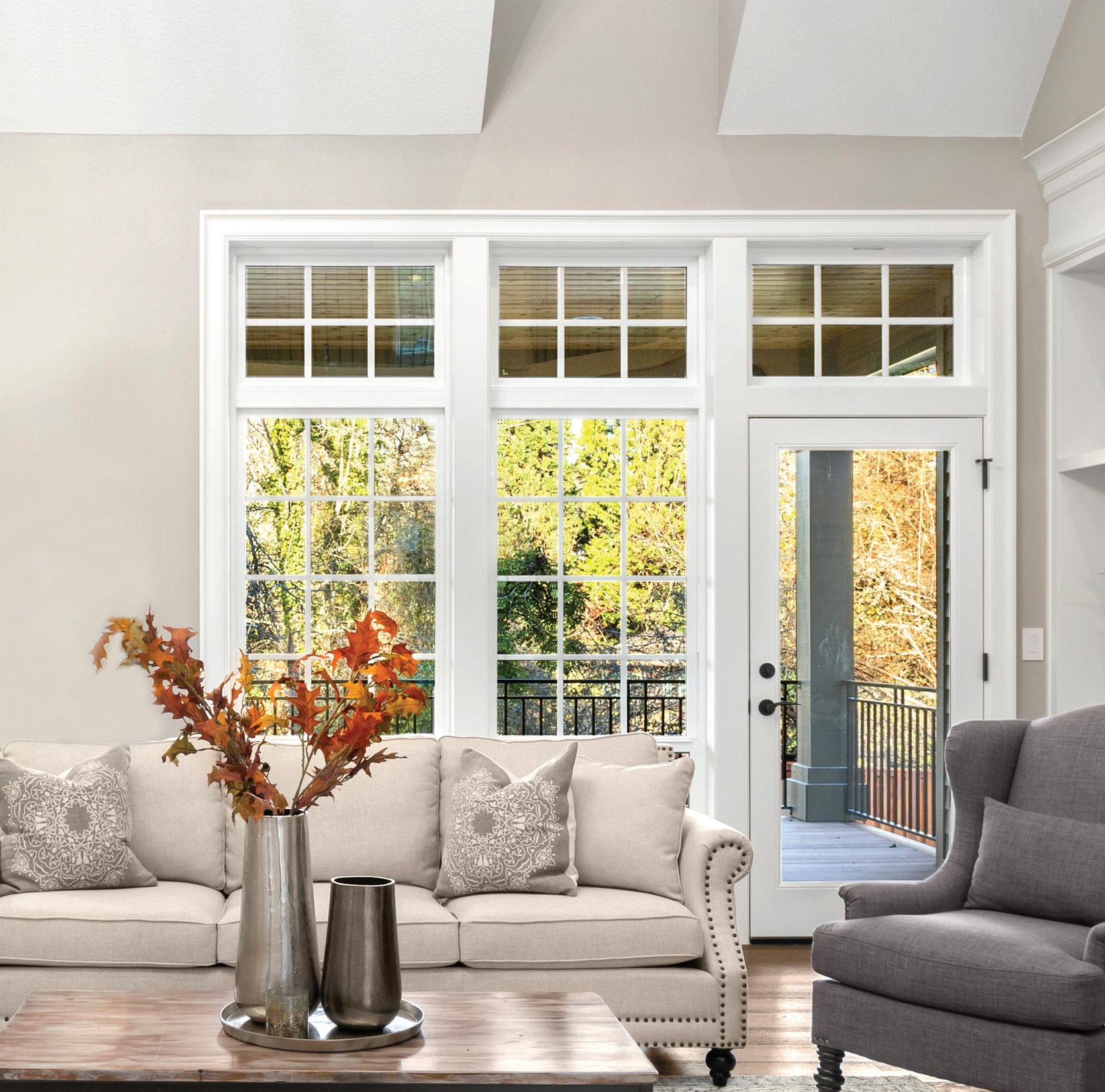



































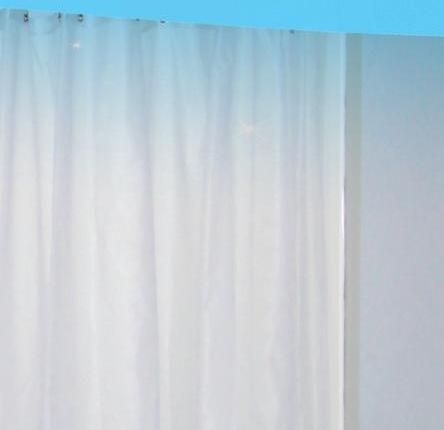
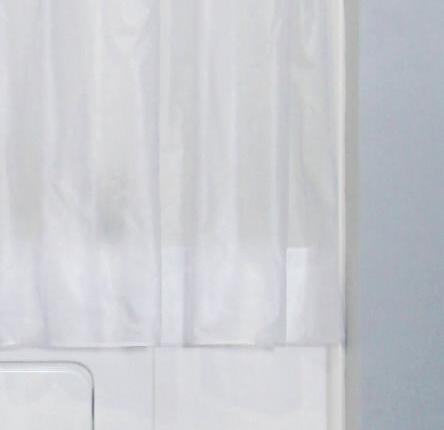

FOODSCAPING from 12
reappear every year.
Carrots’ lacy foliage complements marigolds and provides a feathery contrast to plants with broad-shaped leaves, such as nasturtiums. They also may improve the health of nearby plants by aerating the soil as their long taproots work their way downward.
Highbush blueberries are beautiful shrubs with dramatic red fall foliage. Some varieties can reach 12 feet tall. It’s also an excellent stand-in for Burning Bush winged euonymus, which has been deemed invasive along the entire East Coast and in Illinois. It’s winter-hardy in horticultural zones 3-8.
Thyme will form a thick groundcover that’s hardy in zones 5-9. Sage will do the same in zones 5-8. Alpine strawberry is a perennial groundcover everywhere in the continental U.S.
Rosemary lends a perennial evergreen vibe to gardens in zones 8 and 9, but certainly can be included elsewhere as an annual.
Corn is a member of the grass family, so why not put it to work in place of ornamental grasses? Plant a row in full sun at the back of a border, or use just one to fill a bare spot in the garden.
Instead of purchasing ornamental kales and cabbages for fall decorations,


why not plant garden cabbages and kale? Although the ornamentals are technically edible, they don’t taste as good. Crop varieties, however, can be served with your Thanksgiving feast.
And that’s something to be thankful for.
JessicaDamianowritesregulargardening columns for the AP and publishes the award-winning Weekly Dirt Newsletter. You can sign up here for weeklygardeningtipsandadvice.

The perfect landscape may start with a healthy, lush lawn, but for interest and depth, you’ll also need to consider the plants that surround it.
Thankfully, it’s easy to make considerable improvements to your backyard life using tips from professionals. Landscape designer Doug Scott has partnered with lawn care equipment manufacturer Exmark, to offer these tips for selecting and installing plants that will beautify your outdoor living areas.
—Choose plants well-suited for your specific growing conditions. Knowing your growing zone is important, however you should also be mindful how conditions like sun exposure can change as you move around your yard.
—Choose the right size plants for the space. Bear in mind that what you’re planting today is much smaller than what it will be once it’s matured. Always read a plant’s care label to understand its optimal growing conditions and size at maturity.
—From a design perspective, think in terms of texture, layers and drifts. When addressing the overall texture of your planting beds, choose plants that
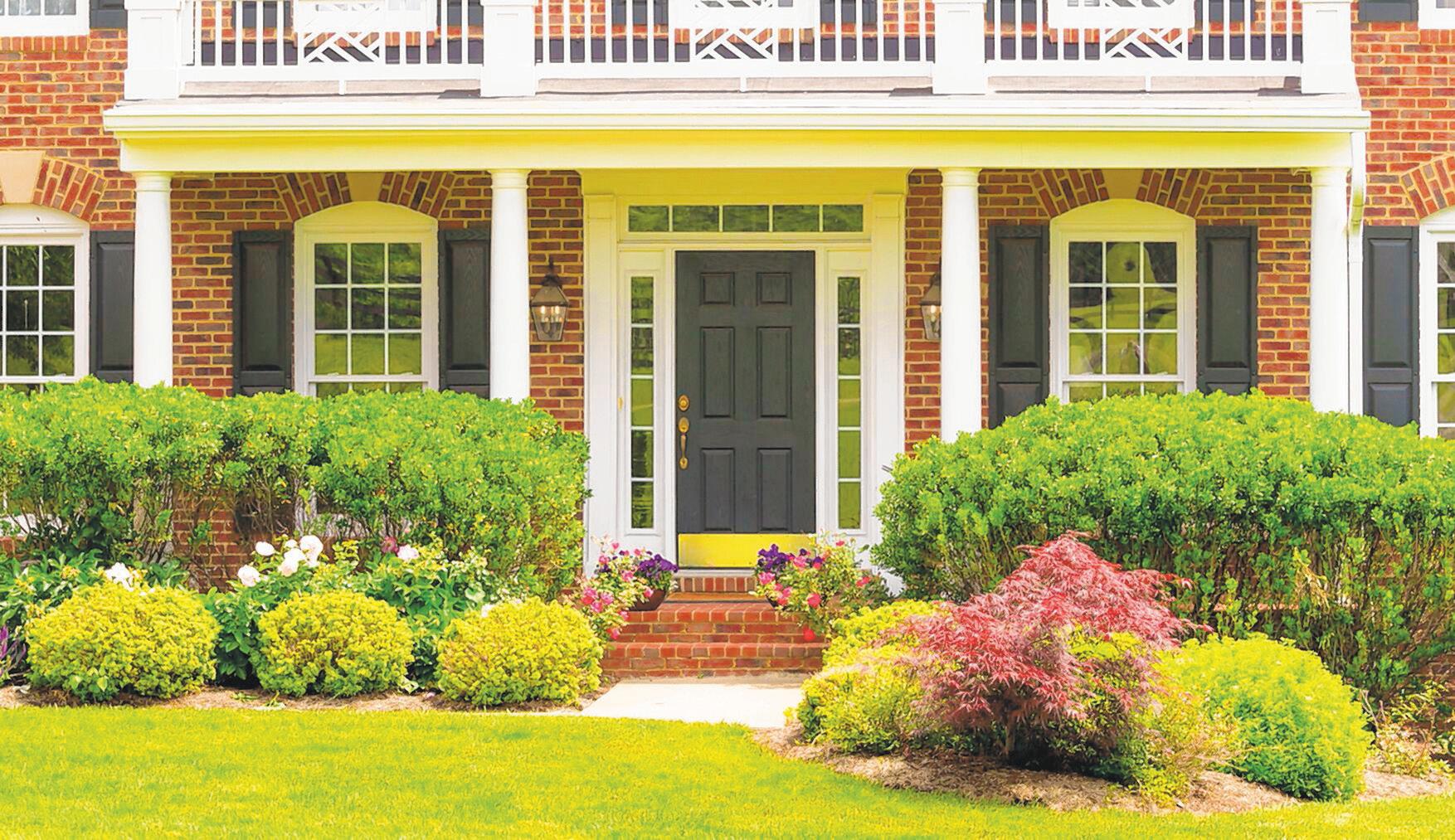
vary in form, size, color and leaf structure. This will create greater interest, and a space that’s more visually appealing and enjoyable to spend time in.
For a lush look, think in terms of layers when considering composition. Much like in a painting, you should have background, middle ground, and foreground layers. Your background layer should consist of taller evergreen shrubs to provide something alive and green to look at all year long, no matter what’s happening in front of them. Your middle ground layer should be lower than the background layer to create interest, and
is where you can add a contrasting evergreen shrub or pop of color with a perennial plant. Finally, your foreground layer should help transition the planting beds to your lawn space. You can accomplish this with smaller perennials, evergreens, annuals or creeping ground covers.
When addressing drifts, read the plant labels to know how large they’ll grow. This can help ensure plants grow in together as they mature, but are not overcrowded.
(1) Dig a hole that’s about two times
the diameter of the pot your plant’s being transplanted form, and about the depth of the pot.
(2)Mend in compost or soil conditioner to give your plant the organic material it needs to thrive. If you’d like, add slow-release fertilizer, and mix well.
(3) Place your plant in the hole, making sure that it sits at, or just above, the level it did in the pot.
(4) Backfill with soil, stopping to add water when the hole is about halfway full.
(5) Fill the rest of the hole with soil, then firmly press down.
(6) Soak your plant with more water.
(7) Finish by adding mulch, making sure it’s pulled away from the base of your plant.
Scott offers more insights in “How to Choose Plants for Landscaping,” a recent episode of “Done-in-a-Weekend Projects,” an original series from Exmark. To watch the video, visit Backyard Life, which is part of a unique multimedia destination with a focus on helping homeowners make the most of outdoor spaces.
“Now that you have the inspiration and know-how needed to choose and install plant material, you can create landscaping that reflects who you are and how you’d like to live outside,” says Scott.
As you navigate the demands of modern life, it’s empowering to know that your living spaces can keep up. Here are five smart home technologies that can help you take control and elevate your home into a sanctuary of modern convenience and elegance.
(1) Ovens: With a smart oven, you may be able to limit the incidence of traditional kitchen snafus. For example, the Sharp Smart Convection Wall Oven with Microwave Drawer Oven (SWB3085HS), a combination appliance, features a single simple-to-use, full-color touchscreen control panel. It Works with Alexa to accept voice commands. (Alexa-compatible device sold separately.) You can turn the oven on and off hands-free, keeping the control panel clean. This model is an excellent example of what technological innovation can bring to home cooking—allowing you to choose settings based on popular foods and recipes and giving you the ability to save up to 30 of your favorite menu items and cook times for easier access. Whether you’re a seasoned chef or just starting your culinary journey, a highly functional smart oven can be a game changer in your kitchen.
(2) Dishwashers: Who doesn’t love extra help in the kitchen, especially
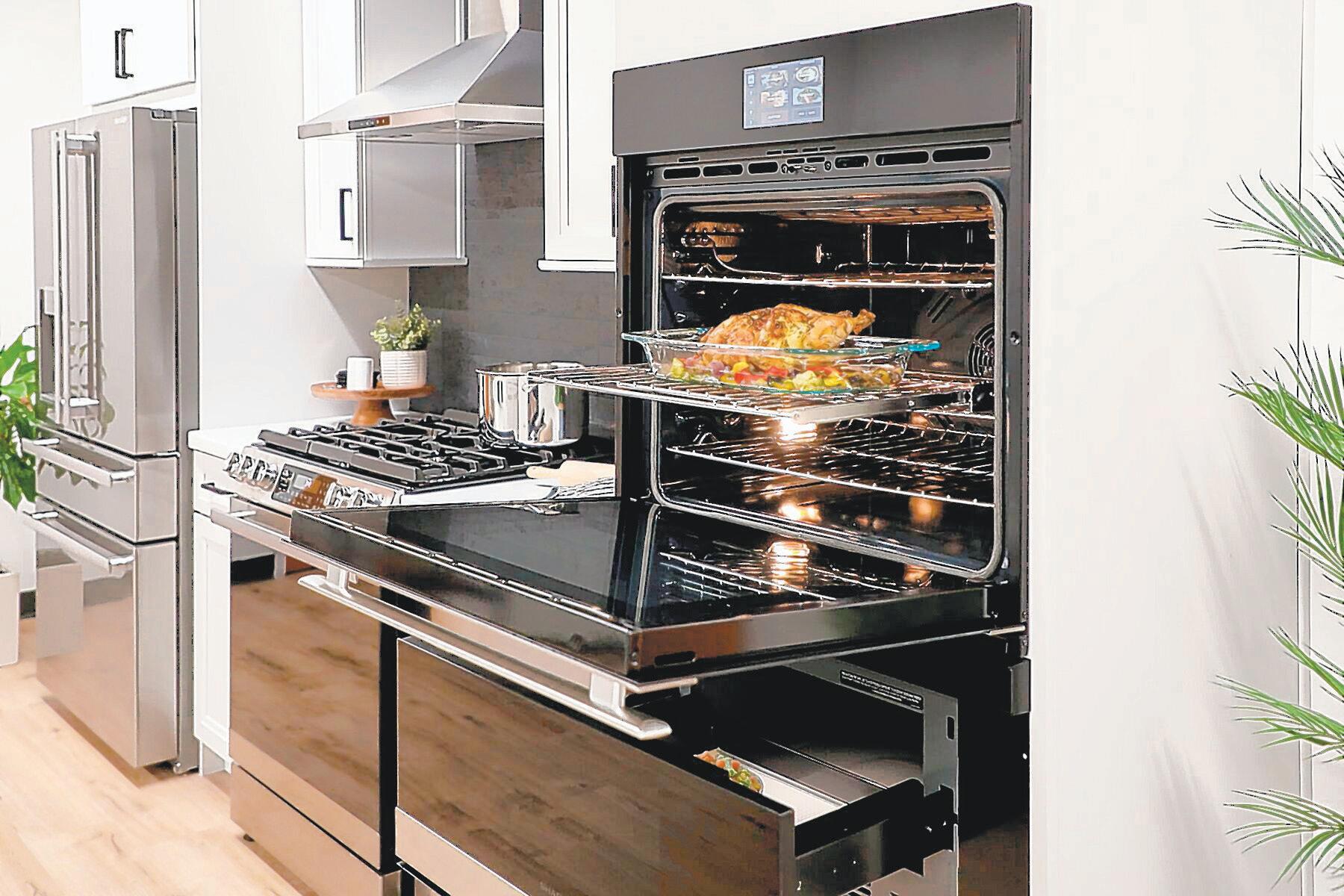
when it comes to cleaning? A smart dishwasher can simplify daily chores. Many smart models can be operated and monitored remotely from your smartphone, so you can receive notifications when the cycle is complete or customize wash settings with the touch of a button to keep cleanup moving along while getting on with other activities. For a modern, eco-friendly kitchen, prioritize energy-efficient features and advanced cleaning technology.
(3) Air purifiers: Create a mindful
living environment with a Smart Air Purifier like the Plasmacluster 7000 Series KCP110UW Smart Air Purifier and Humidifier by Sharp, which is compatible with Amazon Alexa and Google Assistant to allow voice control. (Assistant devices sold separately.) Monitor your home’s air quality, adjust settings remotely, and even receive notifications when it’s time to replace your air purifier’s filters using the SHARP AIR app.
(4) Microwaves: Today’s smart microwave ovens are available in counter-
top, over-the-range and even Microwave Drawer ovens, which can be installed under the counter or in an island to complement your lifestyle. Simple voice commands like “Alexa, microwave frozen veggies” or “Alexa, defrost 1 pound of ground meat” can revolutionize how you spend your time in the kitchen.
(5) Televisions: Thanks to smart televisions, you can elevate your binge-watching sessions and truly immerse yourself in stunning visuals, vibrant colors and seamless streaming experiences from the comfort of your home. Use your voice to find shows, play music, and control smart home devices with a Sharp AQUOS XLED 4K Ultra HD Mini LED Google TV. With personalized watchlists and profiles, everyone’s experience can be customized for them. Another option is a Sharp Roku TV OLED 4K Ultra HD television, which works with popular voice assistants, making it a perfect fit for any smart home.
“Embracing the future of smart living can save you time, energy and hassle. From the kitchen to the living room, let smart devices seamlessly integrate into your daily routine,” says Peter Weedfald, senior vice president of sales and marketing for Sharp Home Electronics Company of America.
This five-bedroom home located at 212 Markwood Drive in Sterling is on the market for $875,000.
Listing agent Palmer Harned of Compass Realty says the home is situated on a quiet cul-de-sac and has a beautiful yard.
“The backyard overlooks trees, so you feel like you are in a treehouse when you are on the multi-tier deck,” she said. “There are multiple outdoor entertaining areas.”
Walking in the front door, the home features a living room to the left which leads to a dining room and then the open concept kitchen and family room.
“The design of the home has a nice circular flow for entertaining,” Harned said.
There has been over $130,000 in recent upgrades to the home including the kitchen. The kitchen features quartz countertops, white cabinets and a navy-blue island, a subway tile backsplash and stainless-steel appliances.
“The kitchen has a pretty bay window with a breakfast eating area, which opens to the family room with vaulted ceilings,” she said.
There is also a powder room and laundry room on the main level.
Upstairs, the primary suite is spacious and the ensuite bathroom has recently been renovated with a seamless glass shower door, custom closet system and new vanity.
The basement is finished and has storage space, a bedroom, full bathroom and recreation area with movie projector which conveys.
The home is close to Dulles Town Center, Claude Moore Park and commuter routes on Route 7 and Route 28.
For more information, contact Harned at 703-868-9983.
